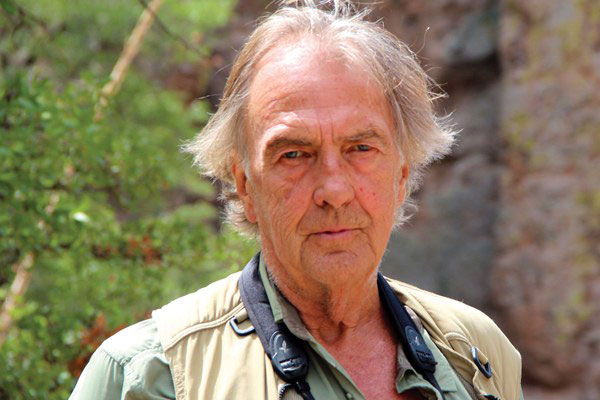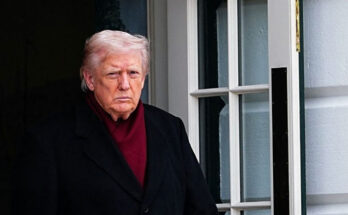Charles Bowden
An excerpt from a forthcoming book
Column By Dexter K. Oliver
I’ll use Chuck Bowden as an example of how easily writers can slip off the rails. Not to pick on him because it’s so easy or because he isn’t here to defend himself but because he disappointed me by routinely sullying his gift with written words by including untruths and hyperbole in what he claimed to be fact. His is a cautionary tale for writers coming up in the profession. I miss knowing he’s around somewhere hammering on a keyboard even if I avoided getting better acquainted with him. That was partly because he always seemed like an accident waiting to happen. Those who step on rattlesnakes, tear up their legs by walking through rather than around desert vegetation, or flip canoes on the Colorado River are considered accident-prone in my world. But that wasn’t my main disillusionment.
Chuck by his own accounting walked a lot, swam, biked, lifted weights, chased women, married and divorced, drove a lot, drank a lot, enjoyed cooking, and was possessed by the writing demon. He wasn’t a military veteran, claimed he couldn’t dance or play the guitar, and never actually earned a living “out there” in the hinterlands; he was a city dweller. As he wrote in his book Blue Desert, “I want to keep moving into the country although all I seem to do is move through it.” He used people and they in turn used him. When he made forays into the desert or mountains he did so as a reporter and a tourist. As such, he was afflicted by that notorious reporter’s dilemma, who to trust while having to rely on other people’s experiences for a story. Flip a coin and you have a fifty/fifty chance of them providing you with the truth.
Chuck often bragged that he had lied about his credentials when he got his three-year reporter’s job at the Tucson Citizen newspaper and he can be seen on video gleefully describing lying to his students when he was an instructor at the University of Illinois. People, like leopards, don’t change their spots although individuals have attempted to hold him up as a paragon of honesty and truthfulness. Getting paid by the word for your work can easily encourage a person to embellish beyond the boundaries of what is known to be factual. Doing most anything to please the paying customer is of course a trademark of an enterprising hooker.
I remember an Arizona Highways article Chuck wrote on the Blue River country below the Mogollon Rim. He left the city to spend a few days up there, glance around, talk to some people then write the piece. In it he mentioned that he hadn’t seen any black bears nor had the people he spoke with. He concluded that they were obviously rare in that area and then in a monstrous leap of the imagination stated that he himself had lived “in bear country” (Tucson??) for decades and never seen one. I had been doing wildlife work in the forests up there, both day and night, for years at that point and knew that bears were in reality so numerous that they were quite often nuisances and occasionally a hazard to human welfare. The editors at Arizona Highways obviously didn’t know enough to question Chuck’s claims. That is exactly how bullshit becomes “fact”, whether in Washington, D.C. or the Southwest.
Another example that might surprise those who didn’t know of Chuck’s penchant for letting his imagination flow freely through his fingertips onto the page involves a book called Frog Mountain Blues that came out in 1987. The first short chapter “Last Call” had Chuck drinking beer in a Tucson bar with an unnamed employee of the U.S. Geological Survey who happened to be my old friend Neil Carmony. In the book, their talk turns to blowing up the road to Mt. Lemmon, as well as the observatory, ski lodge, and radio towers in order to “save” the mountain. Neil was surprised when it came out. He and Chuck had indeed shared some chatter and beers that fateful night but the conversation reported in the book, as Neil told me on numerous occasions, was a complete fabrication.
That book, like Blue Desert, was published by the University of Arizona Press at the time Greg McNamee was the Editor/Senior Editor/Editor-in-Chief. Neil Carmony, who was in fact arguably the most honest of the Tucson literati, eviscerated McNamee’s book Gila: The Life and Death of an American River (and many of his articles) pointing out the howlers of misinformation found between the covers. McNamee finally admitted some of them and offered an olive branch of contrition to get Neil to edit his next book. Carmony refused. Once again, editors – of books, magazines, and newspapers – who don’t know enough to question writers become their unwitting, or uncaring, enablers in spreading falsehoods. Clara Jeffrey, an editor of Chuck’s at Mother Jones and Harper’s magazines wrote that fact-checking his manuscripts were “no small undertaking”. I can imagine.

In 2020, a book of essays on the life and work of Charles Bowden came out, written by assorted contributors and edited by my friend Bill Broyles and Bruce J. Dingus. It was called America’s Most Alarming Writer and sought to cement Chuck’s reputation as being the polar opposite of what his father apparently had called “a goddamned liar.” The expected accolades and bromides were included as well as those bearing witness to Chuck’s relentless truthfulness. However, even the editors did state that he “attempted to give an honest account of the world as he saw it.” And in perhaps the most telling lines in the book Luis Alberto Urrea, author of The Devil’s Highway wrote, “I consider him a master – if not of every book or utterance, certainly a master of audacity. He fought to maintain his integrity. He always tried to tell the truth, even when he lied.”
I thought the most alarming thing about Chuck was how he allowed the teeth to rot in his skull, robbing him of his engaging smile and possibly hastening his demise. He occasionally hinted at a sexually lurid novel he had written, called Lola, but so far at least that manuscript, if it exists, has not been acted upon. Having written a handful of those myself, I can only envisage to what heights his imagination might have soared in that genre.
I once wrote about wildlife field biologists, many of whom I worked with, having hidden agendas that quite often caused them to fudge data, dry lab research, and throw around casual lies like confetti. And I stated, “Credibility in this business is all a person really has, and it only takes one instance of deception to lose it forever. That’s the way it needs to be, in my opinion.” I could have easily said the same about writers. Chuck’s innate talent for putting words together on pages might have been better served if he could have stuck to that credo. Being an icon to other writers who will take away the idea that the truth should never get in the way of telling a good nonfiction story is really, in Chuck’s own favorite words, a sin.
The opinions expressed in this editorial are those of the author.







